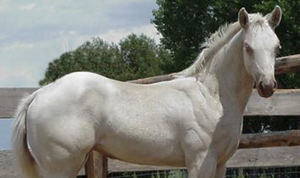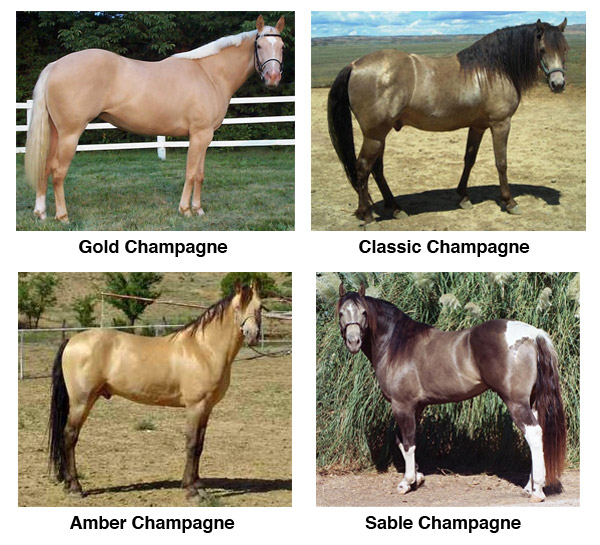 I’m working my way through the colors section to give it some new information and updated images. Equine color genetics is no easy business, but it sure is a pretty one!
I’m working my way through the colors section to give it some new information and updated images. Equine color genetics is no easy business, but it sure is a pretty one!
Dilutions
There are an array of dilution genes which affect the two base colors as well as those affected by modifiers and white patterns. Today I want to share a little about the champagne dilution which is very rare and still rather new to the horse world.
Champagne Dilution
The champagne dilution has an effect on both black and chestnut bases – essentially it can affect any coat color. There are some characteristics generally found with this dilution that sets it apart from the rest. Champagne often produces a metallic sheen on the coat, pink freckled skin in soft spots and light hazel eyes.

Champagne Colors
Although champagne does affect all base colors, it doesn’t produce a particularly large spectrum of colors. A classic is caused by champagne on a black base, creating a golden yellow animal with brown mane, tail and points. Gold is caused by champagne on a chestnut base which lightens body hair to gold and mane and tail to flaxen. Amber is caused by champagne on a bay and also creates a golden yellow body with dark points. Last, sable is caused by champagne on a seal brown animal which lightens body coat to light chocolate with dark chocolate mane, tail and points.
Although a glowing metallic coat is characteristic of the champagne dilution, it is not an indication of genetics. Breeds like the Akhal-Teke are known for their glowing coat, but do not carry the champagne gene.
Learn More About Color
Be sure to visit the new and improved color section for more information about champagne horses and stay tuned, next week we’ll continue the dilution genes by looking at the pearl dilution gene which also creates coats that glow.